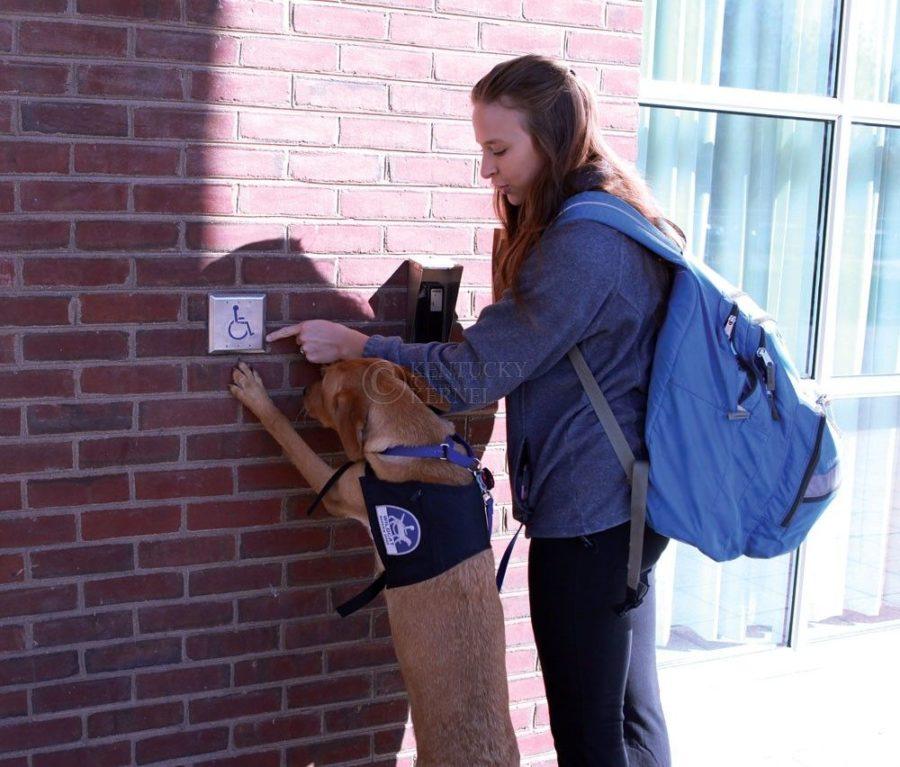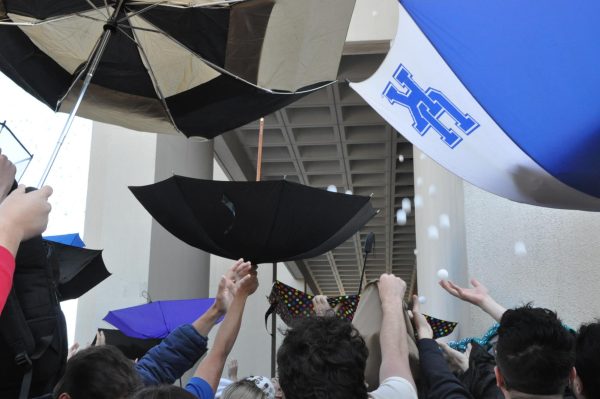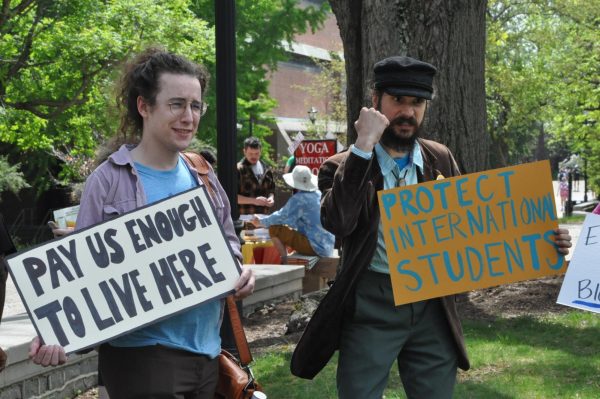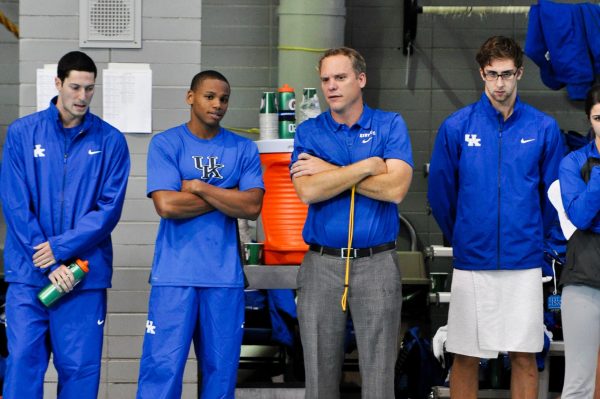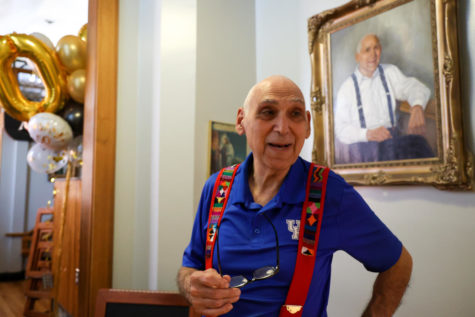Service dogs still learning
November 15, 2012
By Colleen Kochensparger
Wildcat Service Dogs is continuing its assistance dog training program across UK, and both animals and trainers are learning about themselves and one another along the way.
The dogs are learning how to open and close doors and refrigerators, press handicap-access and crosswalk buttons, and of course, how to behave in public places that most pets are not allowed to access.
“I go out of my way to bring (Rory) around kids just to make sure that’s something she’s still interested in,” said Jennifer Lyons, one of this year’s trainers.
Lyons explained that the dogs need to be exposed to every social situation possible—from a school or work environment to a crowded street or store setting — all the while maintaining ideal service dog behavior, no matter who or what goes by.
“They’re protected by Kentucky state law, so they can go basically anywhere the general public goes,” said Wildcat Service Dogs founder and president Katie Skarvan, an animal science junior.
The dogs must master basic commands and prove they are able to follow their owner, down-stay in any situation despite unfamiliar sights and scents, and react calmly and unthreateningly to new stimuli.
“Basically a dog can’t be a dog; he has to be invisible,” said family sciences sophomore Joseph DeCruz.
In a recent turn of events, DeCruz’s dog, Miller, has been evicted from the Wildcat Service Dogs program, bringing the number of dogs currently being trained on campus down to two.
“His temperament just wasn’t going to turn out to be suitable for service dogs,” Skarvan said of Miller. Miller would growl under his breath if something out of the norm happened, such as a student arriving late to class, DeCruz said.
The sound wasn’t meant aggressively, and the future owner would likely know that Miller’s growling was only a protective measure. However, bystanders near Miller’s potential owner might not automatically interpret the growling as harmless, which could pose a significant problem.
“It’s not like he’s regressed or anything,” DeCruz said. “Miller is a very smart dog; it’s part of why his training went so well. He has progressed a lot, though.”
DeCruz is still training Miller for basic obedience and household tricks as a pet.
“In this program, if the dog fails, you’re offered the first choice of keeping him,” DeCruz said.
The failure of a service dog within its program is not uncommon, according to Skarvan, who has been involved with service dogs since the seventh grade.
“There’s a really specific temperament you have to have for a dog to be able to go into public with you because not all dogs can go in the public,” Skarvan said.
Despite Miller’s eviction from the program, DeCruz is still learning more about himself and his dog, as is Lyons.
“I’m growing in patience,” Lyons said of how training Rory has impacted her everyday life. “It’s super important because the dog can sense your frustration, so I have to know when I have to just pause and take a breath.”
Despite the fact that countless dogs have gone through similar training techniques to become service dogs, the training procedures change just a bit for each service animal.
“Every dog is different,” DeCruz said. “You can’t teach every dog the same lessons, so you have to learn the dog and kind of become part of the dog.”
While the trainers take care of the dogs and help them learn, the dogs are also taking care of the owners and helping them learn more about themselves and the world around them.
“(Rory) brings me confidence, too,” Lyons said. “She helps me keep my head up when things make me sad. It’s been proven that petting a dog for a few minutes lowers stress, and that’s definitely been true for me.
“(Rory) inspires me to look at the big picture; to be the best that I can be.”












































































































































